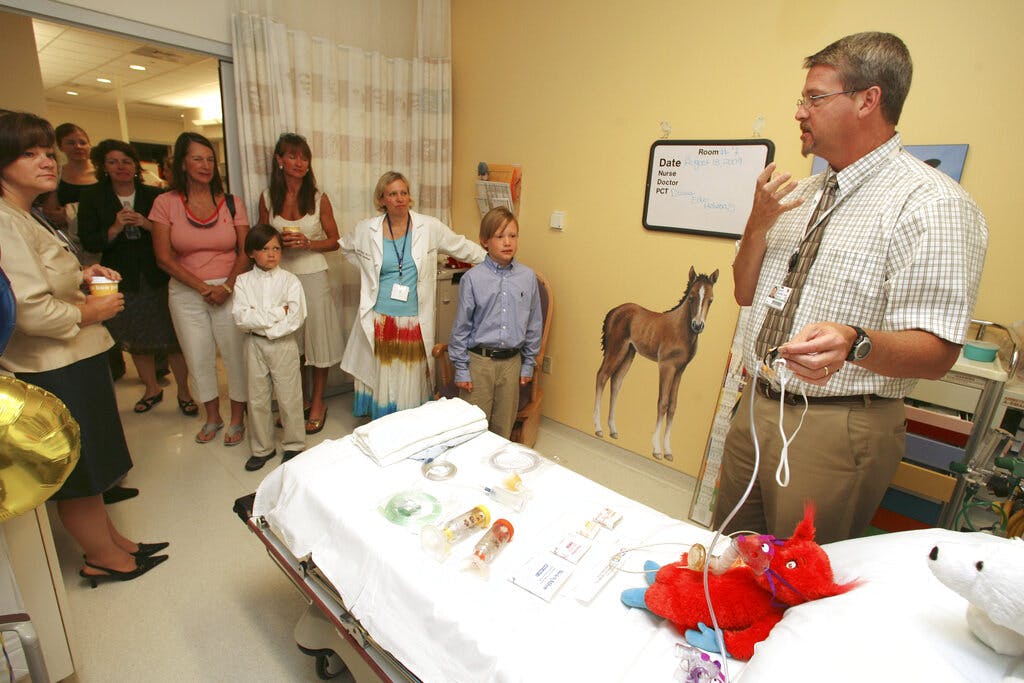‘A National Crisis and People Don’t Know About It’: American Emergency Rooms Are Failing Its Children
‘I was unable to save kids who should have been saved,’ one doctor, who is advocating for increased standards of care nationally, tells the Sun.

When Phyllis Rabinowitz and her husband brought their lethargic newborn baby to an emergency room, they were told not to worry about it and that they were being overprotective. “Let me get to the real emergency down the hall,” she says doctors told them.
The next morning, their daughter, Rebecca, passed away from a misdiagnosed enteroviral infection. She would have recently celebrated her 16th birthday.
It’s a tragic story but not an isolated one.
“It can happen to anyone, anywhere,” Mrs. Rabinowitz tells the Sun. “As we were grieving her death, we were not understanding how this could happen. Because she was released healthy. And we took her to an ER that said she was okay.”
She quickly learned America has higher infant mortality rates and lower pediatric readiness than many other developed countries. Despite children representing one in four emergency visits, American hospitals only received a 69.5 out of 100 score by the 2023 National Assessment of Pediatric Readiness study by the Journal of the American Medical Association Network Open – the equivalent of a “D” grade.
In a study of 11 states over six years, JAMA found that 1,442 children’s deaths could have been prevented if their emergency rooms had been better equipped.
“Many hospitals don’t even have the basic pediatric supplies and equipment, let alone the training for knowing the signs and symptoms and how to treat children,” Mrs. Rabinowitz says. “It’s literally a national crisis, and people don’t know about it.”
The lack of emergency room preparedness is a problem that has gone on for decades, culminating in a growing number of medical professionals and parents calling for reform.
Now, she and her husband run the R Baby Foundation, where they partner with hospitals, advocate for more pediatric training and education, and share the stories of other parents who were sent home by ER doctors and lost their children to misdiagnosed illnesses and preventable deaths.
“I’ve never been about blame, we actually work with the hospital where my daughter died because it’s not like one doctor’s fault,” Mrs. Rabinowitz says. “It’s a system-wide problem,” she notes, adding that many doctors aren’t required to have continuing education in pediatrics or have minimal clinical exposure to babies.
Pediatrics is a separate field of medicine, with babies sometimes presenting symptoms entirely different than adults, she adds.
“Babies aren’t mini adults,” Mrs. Rabinowitz says, adding that while her daughter didn’t have a fever, she still had a life-threatening virus. “Their whole body works differently.”
Her foundation partnered with Massachusetts General Hospital to fund a pediatric version of an app called findERnow, which surveys thousands of ERs and labels ones that are more pediatric-ready with a baby icon. A big part of the battle is educating and empowering parents, she says, who are sometimes told they’re over-worrying.
“Listen to your gut, ask for a second or third opinion if it’s not feeling right,” she says. “You are your child’s best advocate.”
Yet, despite some progress and national attention, including a Wall Street Journal report that found that only 14 percent of emergency departments nationwide are certified as ready to treat children, regulatory agencies need to do more to implement standards of care across the board, she says.
One pediatrics specialist interviewed by the Sun, Dr. Richard Flyer, started fighting for legal change in the early 1980s.
When he was practicing general pediatrics in New Jersey, he was frequently called for emergencies and found that his community hospital emergency department was not set up for children, but for adults.
“I would try to help but I realized I was 20 miles away from a place where I had trained that was all set up for kids, but now I was standing in the adult emergency room in a community hospital,” he tells the Sun. “I was unable to save kids who should have been saved, because one person can’t do everything that needs to be done expertly. You need a team of people and it all has to be organized.”
He soon realized that the problem extended far beyond the hospitals he was working in. Out in the field, he says, first responders wanted to help, but weren’t trained, weren’t equipped, and were “scared out of their minds.” He led the effort to pass an Emergency Medical Services for Children law in New Jersey in 1992 — the first effort of its kind in the country.
Thirty years later, Dr. Flyer says, this law “was never implemented and kids are still dying who could have been saved.”
“This law was to be a model for the country,” he says. Now, he’s meeting with legislators and working towards national regulations that could include federal funding towards emergency medical systems that are adapted to the unique needs of children. He wants to ensure that hospitals that receive federal funding are ready at all hours to care for critically ill children.
“We know what we need to do this time. If we only have state laws, the states might ignore them, and they say, ‘We don’t have money to do this.’ So this time around, we’re going to try to get the federal government to fund this on an emergency basis, because kids are dying,” Dr. Flyer says.
He’s also advocating for increased training to ensure emergency doctors and nurses are comfortable treating children and creating pediatric emergency medicine operation centers — a virtual command center that could link first responders to pediatric experts.
“You need the state level to coordinate, you need the feds to come in and make an emergency allocation to bring all these emergency departments up to snuff, to bring all of the EMS agencies up to snuff,” he says. “And then we have to assure that these folks don’t backslide by making sure that they don’t get federal money for their care if they can’t prove that they can do kids.”

